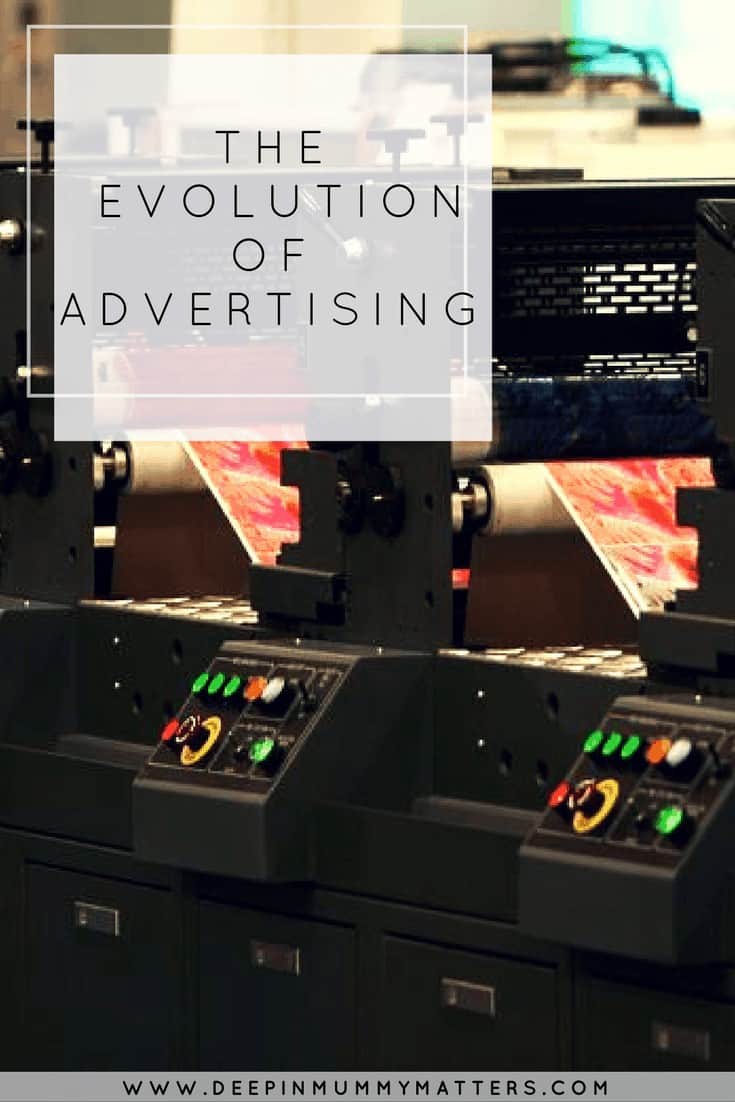Advertising, it’s a pretty important aspect of business if you want to survive and grow. Without advertising, how do businesses find new customers to help them spread the word about the goods and/or services they have to offer?
Print Advertising

Posters and Newspapers
First came Print Advertising following the invention of the printing press by Gutenberg in the early 15th Century. In 1472 a flyer was printed and nailed to the door of a Church to advertise a book of prayers and later in the 17th Century came the Newspapers. During those early days, ‘brands’ didn’t exist, so advertising was a one-way conversation from one individual to another. Customers remained close by so more often than not, advertising would be via word of mouth.
Magazines
In 1844, a new form of print came to market in the form of magazines. Brands were now a ‘thing’ following the Industrial Revolution and the introduction of mechanical/repeatable printers meant that they could reach a wider customer base.
Billboards and Catalogs
Circuses were one of the first businesses to utilise Billboard advertising with earliest recorded being 1835. This was a great form of advertising for circuses and one which is still used today on small roadside billboards. The Billboard agency grew steadily with the development of
Pre-Digital Advertising

Radio and TV
Radio broadcasts were first aired at the beginning of the 1900s, although only began to continuously broadcast in 1919. On the 2nd November 1920, Radio station KDKA Pittsburgh became the first station to be granted a commercial license by the government.
Once again, the USA was the first to take advantage of the media available and began TV advertising on 1st July 1941 when watchmaker Bulova aired an advert before the Brooklyn Dodgers and Philadelphia Phillies baseball game. They paid $9 for their advert on New York TV Station WNBT.
Junk Mail and Telemarketing
Advertisers refer to it as Advertising Mail, those on the receiving end call it ‘junk mail’, the masses of leaflets and mailshots that are received through your letterbox and fill up your recycling bin. Advertising mail began landing on people’s door mats in 1954, some people love it, some people hate it. You can actually opt out from receiving it via various companies. Check with your local postal service if you’ve had enough of junk mail landing on your door mat.
As if junk mail landing on your door mat wasn’t enough, marketing companies started coming into your homes and onto your mobile phones by way of telemarketing. The first telemarketers were actually a group of housewives looking for people to buy cookies. By 1965 more companies began to use telemarketing as a method of reaching new customers and is still widely used today. Just like the junk mail opt-out, you can also opt-out of telemarketing using the TPS service in the UK (though there will be similar services in other countries).
Digital Advertising

Today, one of the most popular forms of advertising is that of Digital Advertising. With the rise of the internet and social media sites like Facebook, Twitter, Instagram and of blogging, advertising is right there at our fingertips every minute of the day.
Our own children are classed as the ‘Millenial Generation’ and are growing up in this digital, connected world. For brands trying to get their name before their preferred audience, they have to work extra hard. Even I know as a blogger how difficult it can be to stay abreast of the algorithms which can make the difference between everyone seeing your posts and nobody seeing your posts! Thankfully, the millennial generation are bridging the gap between digital and print as they split their time on and offline. I have spoken to many businesses in my ‘day job’ who say that whilst they embrace the digital world, they will still always choose print because it reaches their targeted audience. Not everyone loves the online world so you have to account for that when advertising.
Whilst researching this post I came across this video produced by promotional products retailer 4Imprint which outlines some useful statistics about how our future generation views advertising online.
With the world at our fingertips we are able to search for the best price, honest reviews as well as real photographs and videos of the things we desire so what does a brand need to do to reach their audience and stay at the top of their game?
I would love to hear your thoughts, are you a business owner? What do you do to keep your name at the tip of your customers’ fingers?

